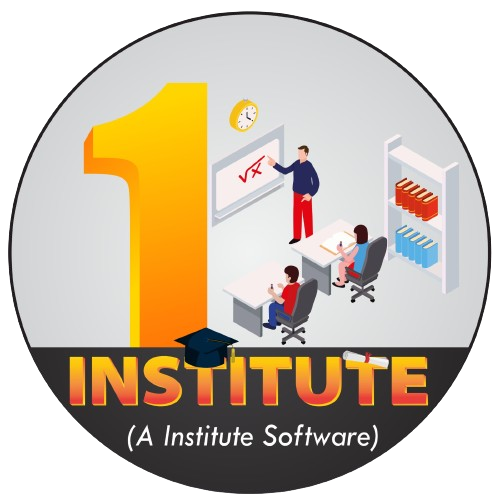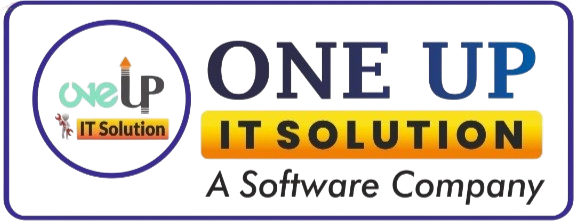Branding Design

Understanding Institute Management Software: Streamlining Educational Administration
In today’s fast-paced educational landscape, institutions are increasingly reliant on technology to facilitate their administrative processes. One crucial technology that has emerged is Institute Management Software (IMS). This software is designed to assist educational institutions in managing their operations more efficiently, ultimately improving the quality of education and the overall experience for students, faculty, and administrators alike. In this blog post, we will delve into what institute management software is, explore its key features, benefits, and the future trends shaping its development.
What is Institute Management Software?
Institute Management Software refers to a suite of applications and tools specifically developed to simplify and automate the daily administrative tasks of educational institutions, including schools, colleges, and universities. These software solutions aim to centralize various processes like admissions, grading, communication, attendance tracking, and resource management into a single platform. With IMS, educational institutions can reduce manual effort, prevent errors, and enhance productivity.
Key Features of Institute Management Software
A wide variety of features can be found in modern Institute Management Software solutions. While specific offerings may differ from one platform to another, some common functionalities include:
1. Student Management
One of the primary features of IMS is efficient student management. This encompasses extensive student profiles that collect data on personal information, academic performance, attendance, behavior, and more. It centralizes information, making it easier for administrators and teachers to track student progress and identify those needing assistance.
2. Admissions and Enrollment Management
IMS usually includes tools that facilitate the admissions process. With online application forms and document uploads, prospective students can easily apply for programs. Software can also automate enrollment processes, send notifications, and keep track of applications, making the entire process less cumbersome.
3. Attendance Tracking
Automating attendance tracking is another essential feature of IMS. The software can utilize various methods, such as biometric systems or digital roll-call tools, to streamline attendance recording. This data can then be integrated into reports, giving real-time insights into student attendance and allowing for timely interventions when necessary.
4. Grading and Assessment Management
Institute Management Software enables educators to assess student performance efficiently. Many solutions allow teachers to create assignments, grade submissions, and provide feedback all within one platform. This feature not only simplifies grading but also enhances transparency, as students and parents can track academic performance in real time.
5. Communication Tools
Effective communication among students, faculty, and parents is vital in any educational environment. IMS often includes messaging and notification systems that facilitate instant communication. Announcements, schedule updates, and important reminders can be sent directly through the portal, reducing reliance on traditional paper communications.
6. Financial Management
Managing tuition fees, donations, and budgets can be challenging for educational institutions. Institute Management Software typically includes financial management tools that help track income and expenses, manage accounts, and generate financial reports. By improving financial transparency and accountability, institutions can better allocate resources.
7. Library Management
A comprehensive IMS will often include library management functions, allowing institutions to track the inventory of books, digital resources, and other materials. This feature includes the ability to issue and return books, monitor overdue items, and maintain a database of available resources, streamlining the library’s operations.
8. Reporting and Analytics
The ability to generate detailed reports and analytics is an essential feature of IMS. Administrators can access data to analyze student performance, attendance patterns, and financial health instantly. These insights can help institutions make informed decisions to enhance their operations and academic offerings.
Benefits of Institute Management Software
The adoption of Institute Management Software offers a plethora of benefits for educational institutions:
1. Increased Efficiency
One of the most significant advantages of using IMS is the increased efficiency in administrative tasks. Automation of repetitive tasks like attendance taking, grading, and enrollment generates more time for faculty and staff to focus on teaching and student engagement.
2. Enhanced Communication
With integrated communication tools, IMS facilitates seamless interaction between students, faculty, and parents, reducing misunderstandings and ensuring everyone is on the same page regarding academic expectations and events.
3. Improved Data Management
IMS centralizes data storage, allowing for easier access, management, and security. This eliminates the risk of data loss and ensures compliance with data protection regulations by safeguarding sensitive student information.
4. Better Decision-Making
By utilizing analytics and reporting tools, institutions can make informed decisions based on comprehensive data insights. This can lead to improvements in curriculum design, resource allocation, and ultimately, educational outcomes.
5. Cost-Effectiveness
Although there is an initial investment in IMS, the long-term savings from reduced manpower, resource consumption, and improved operational efficiency can outweigh the costs significantly. For many institutions, the return on investment (ROI) is realized quickly.
The Future of Institute Management Software
As technology continues to evolve, so does the potential for Institute Management Software. The following trends are likely to shape the future landscape of IMS:
1. Cloud-Based Solutions
Cloud-based IMS allows institutions to access and manage their data anytime, anywhere. This flexibility enhances collaboration among stakeholders and provides opportunities for remote learning and administration, which is increasingly essential in the modern educational environment.
2. Artificial Intelligence Integration
Artificial intelligence (AI) is set to revolutionize the way IMS functions. From personalized learning experiences, predicting student performance and automating mundane tasks, AI can enhance the capabilities of IMS significantly.
3. Mobile Compatibility
With the increased reliance on smartphones and tablets, mobile-compatible Institute Management Software is gaining traction. Institutions are likely to invest in applications that offer mobile access for students and faculty, promoting engagement and flexibility in learning.
4. Enhanced Security Measures
Data security remains a top priority for educational institutions. Future IMS will incorporate advanced security features, such as biometric authentication and blockchain technologies, to protect sensitive information from breaches or unauthorized access.
5. Customizable Solutions
As every institution has unique needs, the future of IMS will likely lean towards customizable software solutions. Institutions will increasingly seek IMS platforms that can be tailored to their specific requirements and workflows, leading to more effective administration.
Conclusion
Institute Management Software is a powerful tool that can streamline operations, enhance communication, and improve decision-making in educational institutions. By automating and integrating various administrative functions, IMS allows stakeholders to focus on what truly matters: providing a quality educational experience. As technology continues to progress, the potential for Institute Management Software will expand, setting the stage for more innovative and effective educational administration solutions in the years to come. Embracing these technological advancements is essential for educational institutions aiming to thrive in a competitive and ever-evolving landscape.


